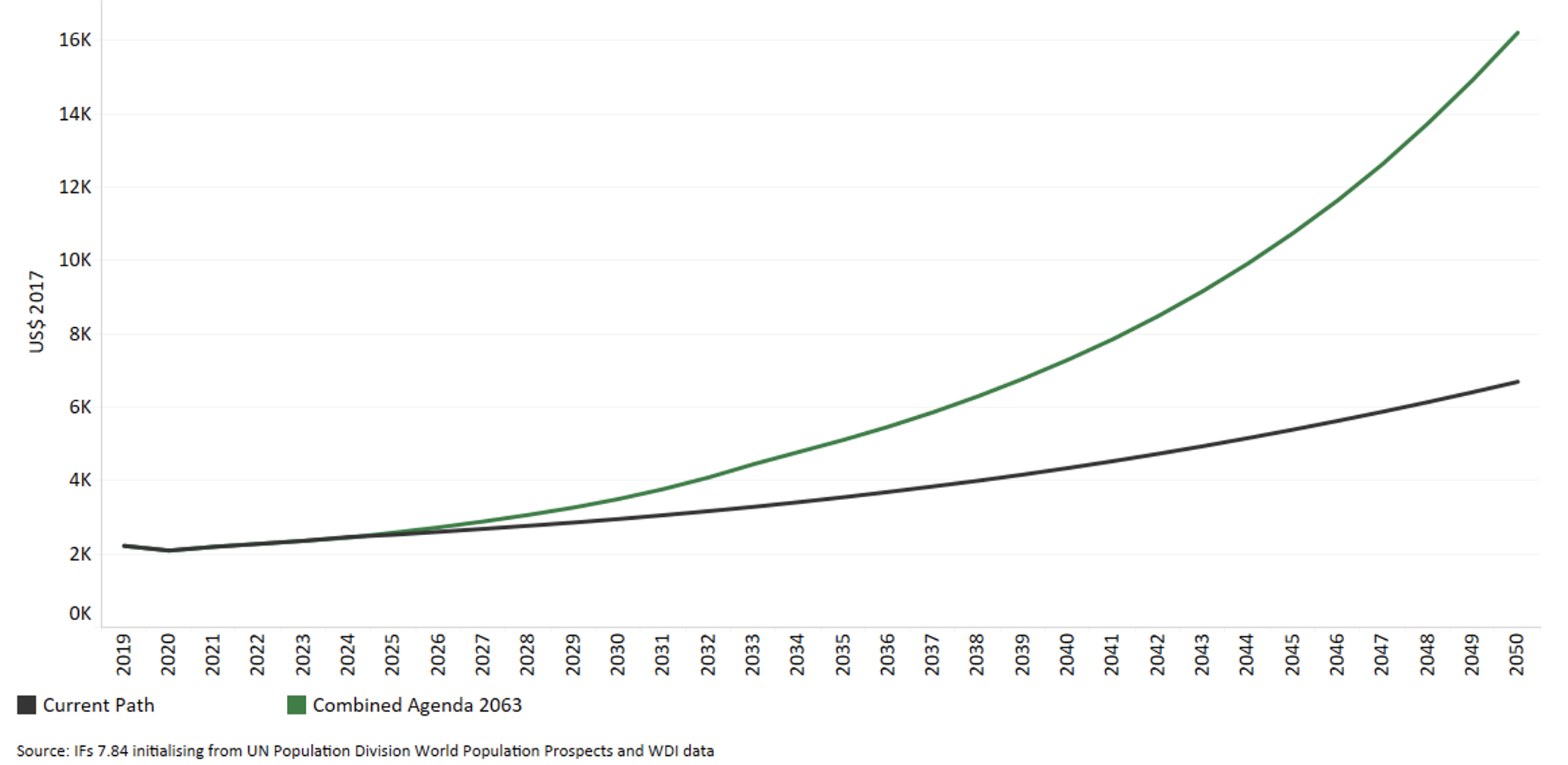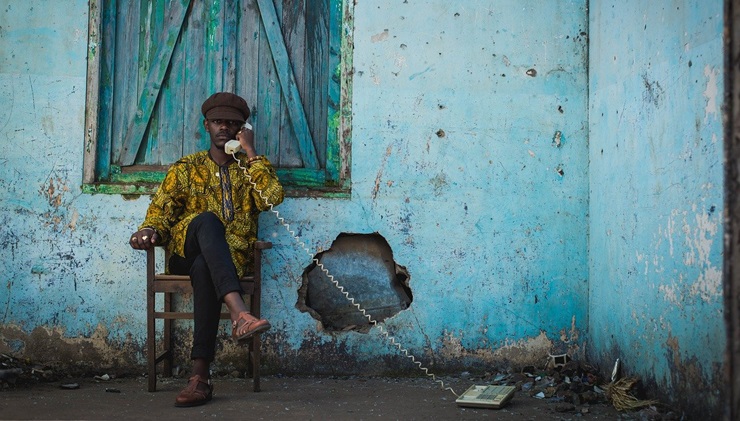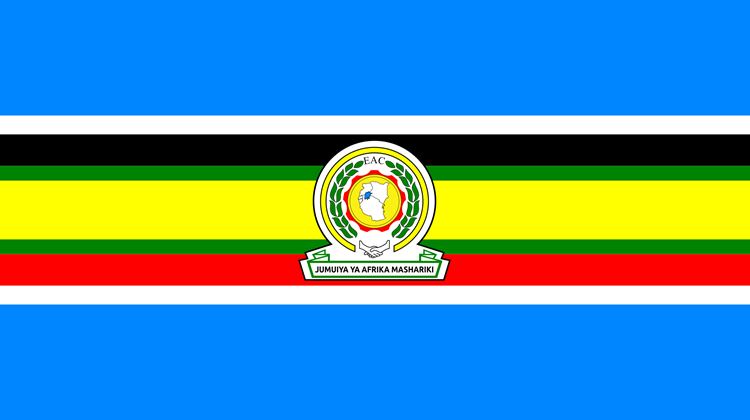What is standing between Rwanda and achieving its Vision 2050 targets?

Rwanda has proven its development mettle – now it just needs to eradicate poverty and raise its income status.
Rwanda’s Vision 2050 is an aspirational and ambitious plan that, if implemented, will eradicate poverty and promote the country to high-income status. Rwanda boasts the track record to realise this dream, but only if its economic challenges are addressed.
Rwanda has made unprecedented development strides in the past three decades. Strong and visionary leadership backed by implemented development plans have seen this low-income country achieve remarkable milestones. After the 1994 genocide, it became one of Africa’s fastest growing economies, averaging GDP growth of 7.2% between 2009 and 2019.
The country’s GDP has more than quadrupled in the past three decades, and this densely populated country managed to improve electricity access from a paltry 1% in the early 1990s to 47% by 2020. The poverty rate has dropped by more than 20 percentage points while life expectancy has climbed by nearly 20 years.
Over the past decade, the country has moved by 100 places and currently ranks as the second best place to do business in Africa, and 38th globally. In 2016, over 80% of households in Rwanda were considered food-secure. The country currently boasts the title of being the least corrupt in East Africa and the fourth least corrupt in Africa.
Clearly, Rwanda has the potential to achieve its Vision 2050
Despite its impressive progress, the country still faces challenges in all spheres of the economy. Structural problems include a balance of payments deficit, rising foreign debt, a small industrial sector, and a large informal sector. At least 40% of its youthful labour force is either underemployed or unemployed. Between 2010 to 2019, the country’s debt-to-GDP ratio increased from 19.5% to 56.8% and was estimated at 73.1% by the end of 2022.
Out of this, external debt constituted 56.4% in 2020 and was estimated to be 53.3% in 2022. Annual inflation jumped to 33.8% in November 2022, the highest since January 1997. The COVID-19 pandemic also disrupted its strong economic growth record with GDP shrinking by 3.4% in 2020, the most significant drop recorded since 1994.
The government now faces the difficult task of maintaining and even improving its economic growth record and translating such gains into poverty and inequality reductions. Rwanda’s Vision 2050 provides the long-term strategic direction for the country and provides the pathways to achieve the country’s 2050 ambition.
It aspires to elevate the country to upper middle-income status by 2035 and high-income status by 2050, providing a high quality of life for all citizens. This is to be achieved by implementing a series of seven-year National Strategies for Transformation, linked to the United Nations’ Sustainable Development Goals and African Union’s Agenda 2063.
Rwanda could achieve its Vision 2050 target on life expectancy as early as 2029
Although the country’s vision is ambitious, its realisation is not impossible. A new study from the African Futures and Innovation team at the Institute for Security Studies (ISS) on Rwanda’s development prospects reveals that it indeed has the potential to become a high-income country by 2050 as stipulated in the Vision 2050 document. However, this will require strategic and targeted intersectoral policy interventions and the maintenance of progress over several successive decades.
The ISS analysis forecasts the impact of eight sectoral policy interventions that could propel Rwanda to high-income status by 2050. The first intervention – Governance – emulates an improvement in democracy, economic freedom, government effectiveness and gender empowerment. It also sees reductions in corruption, government security risk, interstate conflict and levels of internal conflict.
The second intervention – Demographics and Health – reflects an improvement in access to safe water and better sanitation, an increase in access to modern contraception and a decline in communicable and non-communicable diseases and child and maternal mortality.
The third scenario – Education – depicts an improvement in the intake, transition and graduation of students, especially at the tertiary level; as well as better quality of education and an increase in the number of vocational, science and engineering graduates. The Agricultural scenario simulates an agricultural revolution through increased land under irrigation, reduced loss and waste and an increase in yields reflecting improved seed and fertiliser technology.
In addition, the Manufacturing scenario reflects growth through greater investments in the manufacturing sector and research and development investments accompanied by welfare transfers.
Regarding GDP per capita, Vision 2050 has a target of US$12 476 to make Rwanda a high-income country
Similarly, the Infrastructure scenario underscores investments in both physical and digital infrastructure that increases access to paved roads, renewable energy technologies, and mobile and fixed broadband, leading to a more rapid formalisation of the informal sector and improved government efficiency.
There is also the Free Trade scenario that models the full implementation of the African Continental Free Trade Area through reduced tariffs and increased productivity.
The final scenario – External Financial Flow – emulates growth in the stock of foreign direct investment and additional portfolio investment inflows, an increase in worker remittances and aid flows and a decline in illicit financial outflows.
The Combined Agenda 2063 scenario, which combines all the policy interventions, shows that an integrated approach across sectors could help Rwanda achieve its development objectives. In the Combined Agenda 2063 scenario, Rwanda’s GDP is forecast to reach US$267.1 billion in 2050 compared with the Current Path forecast (Business as Usual scenario) of US$97.2 billion in the same year.
Rwanda has made unprecedented development strides in the past three decades
Regarding GDP per capita, Vision 2050 has a target of US$12 476 to make Rwanda a high-income country. The Combined Agenda 2063 scenario shows that by 2050, Rwanda’s GDP per capita will reach US$16 262, almost 30.3% more than its Vision 2050 target and more than twice the US$6 691 projected under the Current Path.
Chart 1: GDP per capita in Current Path and Combined scenario, 2019-2050
US$ 2017, power purchasing parity
The country also intends to eliminate extreme poverty and significantly reduce inequality by 2050. In the Combined Agenda 2063 scenario, only about 9 000 people equivalent to 0.04% of the population will be living below the poverty line of US$1.90 by 2050. This means the country can meet its target of eliminating poverty in the Combined Agenda 2063 scenario.
Similarly, income inequality as measured by the Gini index will reduce more rapidly in the Combined Agenda than the Current Path scenario, reaching 0.32 by 2050. This however won’t be enough to achieve the target of 0.3 by 2050 as stipulated in the Vision 2050 strategy document.
Chart 2: Poverty in Current Path and Combined scenario, 2019-2050
Number of people and % of population
The Combined Agenda scenario will reduce Rwanda’s infant mortality rate to 2.3 deaths per 1 000 live births by 2050. This will be about seven fewer deaths per 1 000 live births than in Rwanda’s Current Path forecast and about 16 fewer deaths than the Vision 2050 target.
Likewise, by 2050, the average life expectancy will rise to 78.7 years – about two years more than the Current Path projections and almost six years more than the target of 73 years in Vision 2050. In fact, Rwanda can achieve its Vision 2050 target on life expectancy as early as 2029.
Clearly, Rwanda has the potential to achieve its Vision 2050. However, this cannot be achieved on the Current Path. Only targeted intersectoral policies underpinning interventions in these eight sectoral scenarios can help the country realise its Vision 2050 goals.









